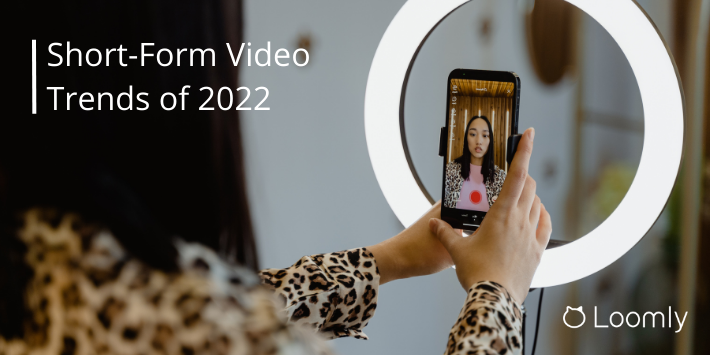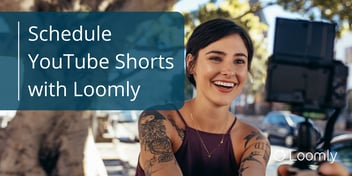Ever since a certain social media app called TikTok went viral during the early stages of the Covid-19 pandemic (pun kind of intended), short-form video has exploded.
In 2021, people were watching an average of 18 hours’ worth of video every single week.
But, more to the point, marketers who use short-form video overwhelmingly report getting a great return on their investment, and research backs them up.
According to Wyzowl, 73% of customers prefer learning about a product or service by watching short-form videos. And 88% said those videos had convinced them to take out their wallets and try a new product or service.
With numbers like those, short-form video is well worth a try, right?
To that end, here’s a look at the five biggest short-form video trends you should watch in 2022, and a round-up of the best short-form video platforms to join.
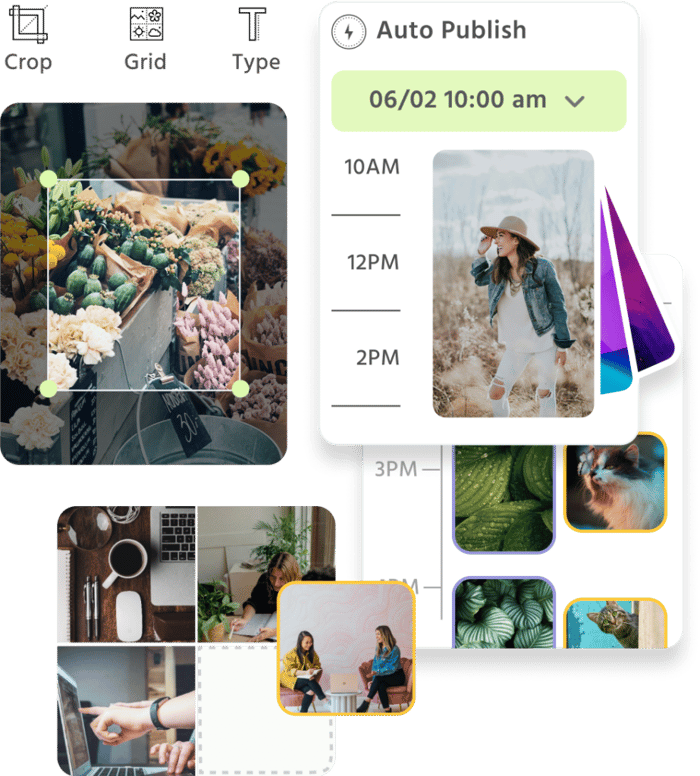
Manage all your social media accounts in one place.
Craft, schedule, & auto-post content to all your social channels, then track analytics and manage interactions from a single, easy-to-use dashboard.
What is a short-form video?
While short-form videos have to be, by definition, short, there’s no standard length. Many viral TikTok videos are 15 seconds long. At the other end of the spectrum, some short-form videos are 3 to 4 minutes long.
That said, research suggests the sweet spot — the length at which engagement is highest — is just under the one-minute mark.
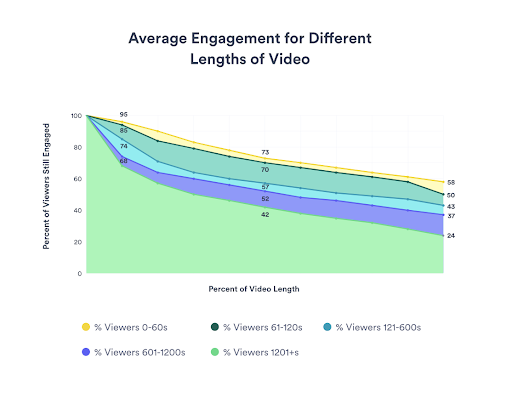
Source: Vidyard
The single biggest benefit of short-form video is that it’s perfect for today’s dwindling attention spans.
Most viewers will watch a video until the end if it’s less than one minute long. And that means you’re more likely to get your message across before your audience moves on to the next shiny digital object.
But short-form videos also have three other significant benefits from a marketer’s perspective:
-
They make your brand more visible
More and more, social media algorithms are prioritizing video.
The upshot is that videos — particularly short-form videos — are more likely to appear on people’s feeds, even if they don’t follow your brand or know about it.
Users are also two times more likely to share videos they enjoy than any other type of content.
-
You can do more with less
Because short-form videos are, well, short, they’re ideal for repurposing.
You can split a longer video, a blog post, or even a longer piece of content such as an e-book or white paper into short clips and obtain several pieces of snackable, highly discoverable content to share on social media.
What’s not to like?
-
They’re popular
We’re not saying you should jump on the short-form video bandwagon just for the sake of it.
That said, if you want your content to get in front of as many people as possible, you need to deliver it in the format your audience prefers. Increasingly — particularly in the coveted 18 to 34 demographic — that’s short-form video.
The 5 top short-form video trends in 2022
If you’ve read this far, we hope we’ve persuaded you that short-form video is worth exploring if you want more eyeballs and engagement.
But what kinds of short-form videos should you be creating?
Let’s take a look at the five top-performing types — or genres, if you like — of short-form video.
1. User-generated content
You can’t go wrong with user-generated content.
For starters, it’s as easy and budget-friendly as it gets. You set the parameters, and your customers do the rest.
More to the point, customers perceive it as 2.4 times more authentic than branded content, because it’s made by real people.
It also provides you with a goldmine of data about your target customers — who they are, how they think, their pain points, and, crucially, what they like best about your brand — which you can use to improve your targeting.
The key to succeeding at user-generated content is making sure it ties into your brand.
For Mother’s Day 2020, for instance, toothpaste manufacturer Colgate ran a campaign encouraging customers to post TikTok videos of them doing something special for mum, with the hashtag #MakeMomSmile.
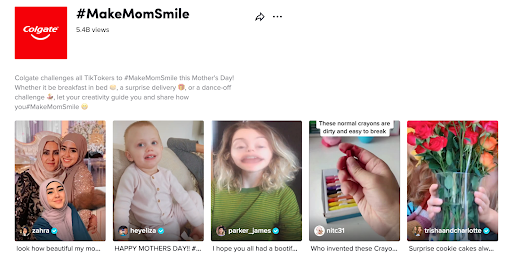
The campaign was a resounding success, not only because it generated thousands of heart-warming and inspirational videos — internet crack — but also because it put millions of pearly whites on display.
And Colgate, of course, is in the business of making sure pearly whites stay pearly white.
Similarly, the #PlayWithPringles campaign, where users were encouraged to post videos of themselves interacting with a giant virtual reality tube of Pringles, reinforced the idea that Pringles is a fun brand. A product you share when you’re having good times with family and friends.
But user-generated content doesn’t necessarily have to be inspirational. You can also entice people with incentives.
GoPro excels at this.
Most of their user-generated content is submitted to the GoPro awards, which give out up to $1 million a year in cash prizes to the winners.
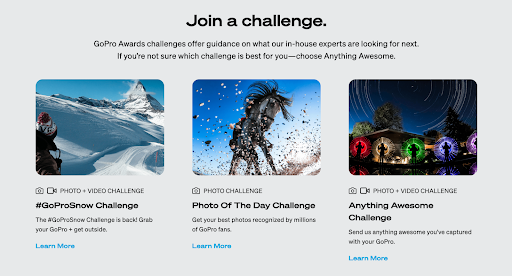
2. Influencer videos
While not as cost-effective as user-generated content, partnering with influencers is also a great way to amplify your brand.
Influencers can put your brand in front of a whole new audience. And because they’ve built a relationship of trust, sometimes over many years, their followers are more likely to take their recommendations to heart and try your products or services.
When cell phone manufacturer Motorola wanted to broaden their appeal to younger generations, for instance, they asked influencers to create videos showcasing Motorola Mods — Motorola’s line of cell phone accessories.
Each influencer’s video showcased a particular use-case with a cool twist.
Case in point, Meredith Foster, who has 4.8 million subscribers on YouTube, created a video — at 7 minutes 35 seconds it’s a short film, though not exactly short-form — in which she goes ghostbusting at a haunted high school.
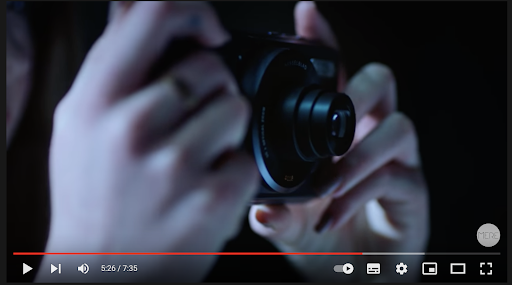
Similarly, Subaru ran a #MeetAnOwner campaign in which influencers took videos of the new Impreza in the wild. Like this one from extreme sports enthusiast Devin Graham, who posted it to his 6.8 million YouTube subscribers.
3. Product teasers
Planning an event or launching a new product?
Humans are curious by nature. So a short clip hinting at your launch without revealing too many details can create intrigue and excitement.
Metal band Trivium did this exceedingly well when they were about to announce their latest album.
In July 2021 — three months before the album hit record stores — they released a cryptic 20-second clip of a book floating in the current with the hashtag #ITCOD.
It turned out that the hashtag stood for In the Court of The Dragon — the name of the new album and its lead single.
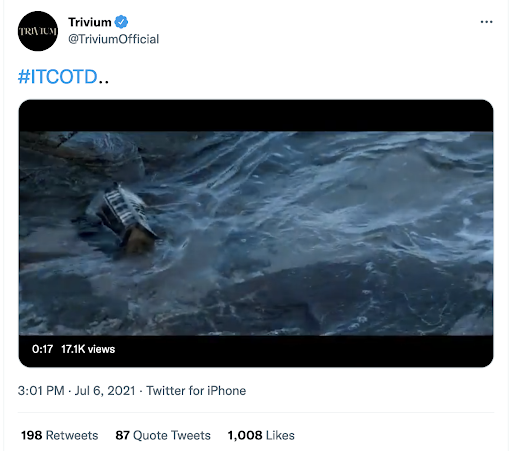
But you don’t have to be coy or cagey to make a successful teaser video.
This oldie but goodie 24-second teaser for Asus’ mechanical gaming keyboard builds excitement by showing the product in all its glory from every angle possible.
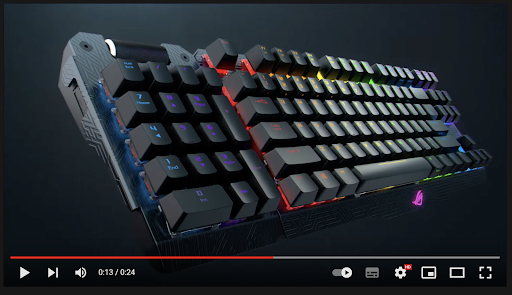
How could you resist not buying that beauty, right?
4. Educational content
According to Google, searches for educational videos, particularly those with ‘how to’ in the title, increase by 65% year on year. And, seeing as 65% of us are visual learners — which means we absorb new skills by watching other people — that’s not surprising.
For this reason, short-form educational videos can be great sources of traffic. They address customers’ pain points head on. And because they’re short, they get straight to the point and are easier to digest.
Over time, building a library of short-form educational videos can help your brand become customers’ go-to resource when they want to try and solve a problem by themselves.
And if they don’t manage to sort out the issue — or if they make matters worse — you’ll be the first brand they’ll turn to for help.
5. A glimpse behind the scenes
To paraphrase the most prolific author of all time — good old Anonymous — people will forget what you said and did, but they’ll never forget how you made them feel.
This is as true in business as it is in life.
Ultimately, people do business with people. And giving your customers a glimpse behind the scenes can show them that there are indeed some nice, relatable humans behind the brand.
There’s lots you can do when it comes to behind the scenes content.
You could take your viewers on a quick tour of your office, show them how your product is made, or take them with you on a team-building activity.
But if you’re feeling braver, you could also show them what happens when you get things wrong.
Blooper reels, like this one from Incite Video, are funny and make you seem more likeable and relatable.
And who would you rather buy from: a faceless corporation, or someone you’d happily sit down and have a drink with?
The 5 top short-form video platforms
Because the demand for short-form videos is growing, more and more platforms are meeting that demand by adding short-form video features. Even Netflix is getting in on the game.
So where should you focus your energy? Which short-form video platforms are the best fit for your brand?
Here’s our roundup of the top five.
1. TikTok
If you’re not on TikTok in 2022, does your brand even exist?
With over 1 billion monthly users consuming an average of 52 minutes of content a day, it’s the place to be if you create short-form video content.
TikTok has three compelling benefits for marketers.
Firstly, it’s a hotbed of memes and viral trends. And this makes it the perfect place to run user-generated content campaigns.
Since January 2022, for instance, users have posted billions of videos where they try to run out of the frame before their camera’s timer — set between 5 and 10 seconds — hits zero. All to the tune of Mooski’s Track Star.
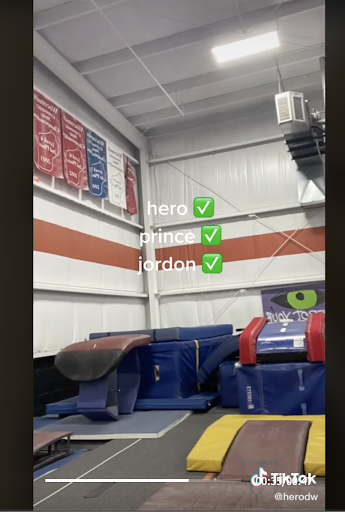
And that’s just one of the several viral opportunities you could exploit.
Secondly, it’s easy to be discovered.
When a user interacts with a certain type of content — Track Star challenge videos, for instance — the algorithm will keep showing them more of that type of content. The app even has a For You feature — an infinite feed of content that is similar to what you’ve consumed before.
This is a win-win for users and creators. Users can quickly discover content from creators they might not know about. And creators can quickly build an audience, even if they’re new to the platform.
Lastly, creating videos couldn’t be easier.
Loomly Tip: Use Loomly’s TikTok integration to plan, schedule, and preview TikTok content.
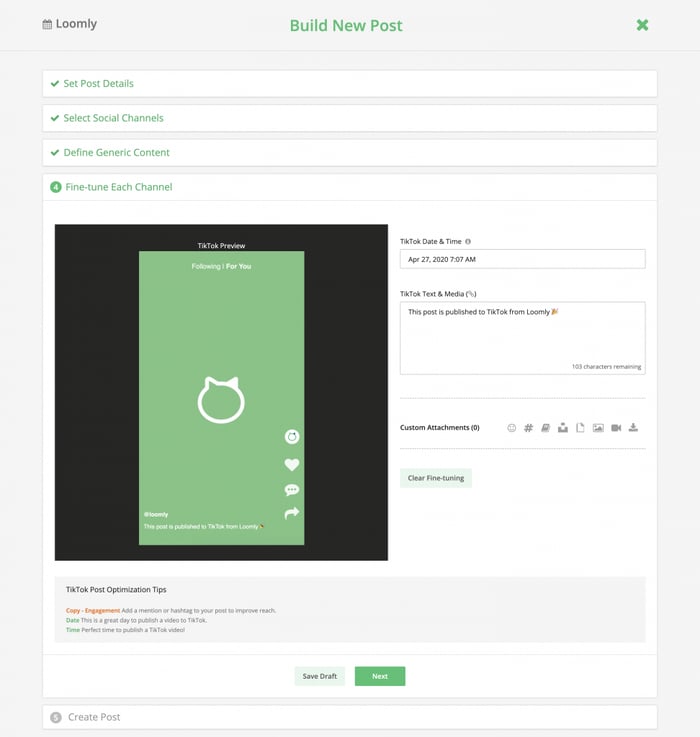
TikTok’s video interface is intuitive to use and has built-in visual and sound effects, including a music library.
2. YouTube Shorts
YouTube Shorts is YouTube’s younger sibling, built for “anyone who wants to create short, catchy videos using nothing but their mobile phones.“
Since it was piloted in India in September 2020, it has grown from strength to strength. By May 2021, it was getting a massive 15 billion views every single day.
Aside from the huge user base — and YouTube’s pedigree as the premier online video sharing site — the most enticing thing about YouTube Shorts is their $100 million YouTube Shorts Fund.
Each month through 2022, the creators with the most engaging content have an opportunity to win cash rewards, even if they’re not part of YouTube’s Partner Program.
3. Instagram Reels
Launched in August 2020, Instagram Reels lets you post videos up to 60 seconds long that, unlike Stories, don’t disappear after 24 hours.
Reels are great for showcasing your products and sharing educational content with Instagram’s one billion monthly active users.
Makeup brand Maybelline’s makeup tutorials, for instance, have racked up millions of views.
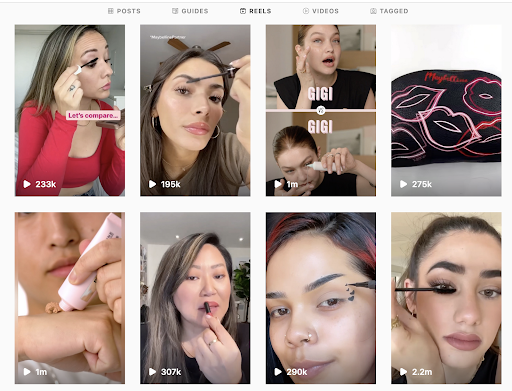
You can also use Reels to run native ad campaigns.
4. Triller
With around 65 million active users, Triller is not as big as the other short-form video platforms on this list. But it’s growing.
Triller is often compared to TikTok. Like TikTok, it allows you to create branded challenges and give away prizes to the users who submit the best content.
But where TikTok’s algorithm prioritizes viewers’ habits, Triller prioritizes new and popular content.
Triller also doesn’t have native advertising.
Instead, you can crowdfund from your followers, monetize videos, and create exclusive membership-only content.
5. Snapchat Spotlight
Spotlight is comparable to TikTok’s For You Page, with one key difference. To get featured on Spotlight, your short-form video — on Snapchat, this is called a snap — has to go through a selection process.
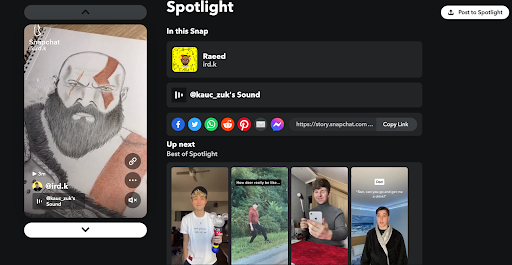
Your snap will be reviewed for quality and originality.
It must also follow community guidelines. In particular, snaps:
- Must be no longer than 60 seconds
- Must have vertical orientation
- Can’t be sponsored or attempt to sell a product or service
Of course, if your snap is selected, it will be seen by Snapchat’s 319 million daily active users.
Snapchat is also paying the best Spotlight creators $1 million a day. Which means that, alongside growing your brand, you could also bring in some tidy additional revenue.
Getting started with short-form video, in a nutshell
If you’re a marketer looking to reach more customers online, investing in short-form video could reap huge dividends.
Short-form videos are relatively quick and easy to make, highly shareable, and create loads of engagement opportunities. Just remember to make sure every piece of content you create serves a clear purpose and ties-in to your brand.
Lights, camera… action!
